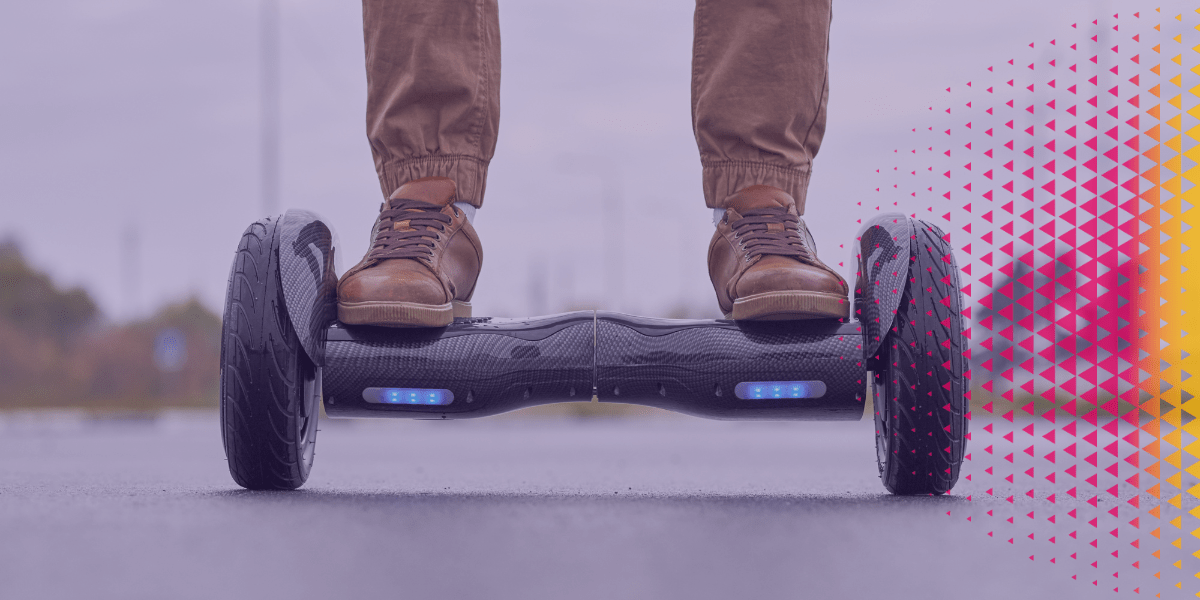What is a NVEI?
Also called EDPM (motorized personal travel machine)an NVEI is a vehicle with an electric motor whose maximum speed cannot exceed 25 km/h. Ecological and light alternative to other vehicle forms (automotive, motorcycle, scooter), this new generation urban means of urban transport has experienced a real boom for a few years.
THE new individual electric vehicles (NVEI) arise in different forms with various names, sometimes lending confusion.
Gryropods
Also called “segway”, the bears are electric vehicles with two parallel wheels and directed using a handle and a handlebars. To move forward or back, the driver uses his weight by deporting himself forward or backward.
The hoverboards
Also called electric skateboards, mini-gyropods or hovertrax, these NVEIs have a functioning close to that of the beats, with the difference that they are devoid of handle and handlebars.
The Monoroues
Sometimes called monowheels, airwheels or soloowheels, monoroues are electric monocycles similar to hoverboards. However, unlike the latter, they have only one wheel.
Electric scooters
As their name suggests, the electric scooters are variants of classic scooters with an electric motor.
These are the most framed EDPMs by law: indeed, as soon as their maximum speed exceeds 25 km/h, they are considered as motor vehicles with the highway code. The owner of such a vehicle has the obligation to take out a Electric scooter insurance And circulate only on roads or on a cycle path.
Electric bikes
We distinguish:
- Electric assistance bikes (VAE), the engine of which activates when the pedal cyclist, in order to limit the necessary effort.
- The rapid electric bike, the engine of which activates manually using a trigger, for example. It avoids any physical effort (or almost) on the part of the cyclist. This variant of the electric bike is more framed by law, due to the high speeds that it is able to reach.
Nvei: What does the regulations say?
The law provides for certain conditions to be able to conduct an EDPM or NVEI:
- Be at least 12 years old.
- Do not go up to several on the vehicle: in the event of an offense, the offenders are exposed to a fine of 35 euros.
- Do not exceed the maximum speed of 25 km/h: in the event of an offense, the driver risks a fine of 1,500 euros.
- Circulate only on cycle paths or on roads whose speed is limited to 50 km/h or less.
Is NVEI insurance compulsory?
The answer depends on the maximum vehicle speed. Indeed, insurance is optional for an NVEI not exceeding 6 km/h. For this type of machine, the Civil liability guarantee included in the Home insurance contract of the owner is generally sufficient to compensate for any damage caused by the vehicle.
On the other hand, when the maximum speed of the machine exceeds 6 km/h, It is compulsory to take out EDPM insurance. The latter is often similar to a motorcycle insurance contract, covering the driver's civil liability at least. It is also possible to take out more extensive guarantees, covering for example theft, fires or corporal damage.
To know
The lack of insurance of an NVEI is liable to a fine of 400 euros, up to 7,500 euros in the event of a recurrence.
Finally, the Electric assistance bikes are a special case, since they are considered to be conventional bikes, whatever the maximum speed of the vehicle. It is therefore possible, but not compulsory, to take out specific bicycle insurance.
What are the compulsory equipment to travel with an NVEI?
Since July 1, 2020, any individual electric vehicle must be equipped with brakes, position lights (at the front and rear), a sound warning, but also retro-reflective devices. Excluding agglomeration, wearing a reflective vest is compulsory at night and when visibility is low during the day.
Other equipment, although optional, is highly recommended. This is particularly the case of the helmet, gloves or elbows and kneepers.
Nvei insurance guarantees
EDPM insurance generally includes two main guarantees:
- Liability : It makes it possible to compensate bodily or material damage caused to a third party, by imprudence or negligence, when using the vehicle.
- Criminal defense and accident appeal : It allows the insured to benefit from support and advice in the event of legal proceedings against him.
Nvei users also have the possibility of strengthening their coverage by subscribing to additional guarantees:
- Individual accident warranty : It covers bodily damage suffered by the insured during the use of her electric machine.
- Flight guarantee : she compensates the insured in the event of theft or attempted theft of the vehicle.
- Collision damage warranty : It covers the damage caused by a collision with a third party.
- Protection equipment guarantee : she reimburses helmets, gloves and other damaged protective equipment following an accident.
Ultimately, the use of new individual electric vehicles (NVEI) is strictly framed by law. But these motor vehicles are not all subject to the same obligations, particularly in terms of insurance.
By Orisha Insurance
Do you like this article? Share it!





